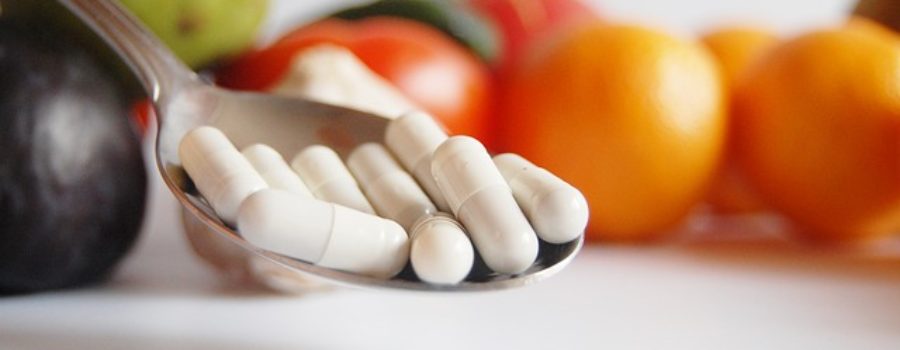How Useful Are the Probiotics?
The probiotics are probably “the talk of the town” nowadays. A lot of people discussing and wondering about them, numerous articles covering their benefits, and a lot of commercials everywhere.
What really are the probiotics? They are live microorganisms or “friendly bacteria” that have health benefits for the host—us. Regarding this topic you may have or will come across two other different terms: prebiotics, meaning food components (usually of carbohydrate type), that cannot be digested or absorbed in our small intestine and reach the colon where they are fermented by the gut friendly bacteria, process stimulating their growth; and synbiotics—a combination of pro- and prebiotics that improve the balance of the beneficial bacteria. Food sources for prebiotics are leeks, asparagus, chicory root, Jerusalem artichokes, garlic, onions, wheat, oats, and soybeans.
How do the friendly bacteria benefit us? Mainly by competing with the bad bacteria for the intestinal receptors and for the intra-intestinal nutrients; producing antimicrobial substances; stimulating immunoglobulin A production—an important immune defense mechanism. Other mechanisms include strengthening intercellular junctions, improving bowel motility and producing substances (glutamine, arginine, and short-chain fatty acids), that act as nutrients for the host or inhibit the growth of disease-producing bacteria (pathogens).
There are different types of friendly bacteria for different areas of our body (skin, nose, mouth, respiratory tract, intestinal tract, and urogenital tract) and they perform important functions at their location. Until birth we are germ-free, but our colonization with microbial flora starts right at birth; the bacteria depend on the type of delivery, whether natural (vaginal) or C-section, and are even influenced by mom’s diet—especially during the last trimester of pregnancy. The babies who are breastfed develop different bacteria compared with those that are formula fed, and after the solid foods are introduced, the flora shifts closer to toward the adult variety.
The dietary probiotics and the ones from supplements make their way into our bodies. Since there is no “dispatcher” at the entrance, you probably wonder: How do they know where to go? This depends on the specific types of bacteria and the preferences for certain conditions at their destination. The pH (low or high acidity), temperature, availability of specific nutrients and oxygen in certain tissues—they all dictate where the friendly bacteria will go. Other aspects have to do with their specific capacities to attach to a specific tissue.
What’s really amazing about the gut bacteria is that, depending on our diet, different types of bacteria proliferate. Changes in the diet from low fat to high fat, low fiber to high fiber, animal products to vegetarian, produce changes in the friendly gut bacteria within 24 hrs. The emulsifiers I analyzed in the book (like polysorbate 80 and carboxymethyl cellulose), present in numerous widely consumed foods (fat-free cottage cheese, ice cream, whipped cream, salad dressings, and others), promoted obesity in animal studies. They did it by affecting the gut friendly bacteria, that are replaced with “less friendly” strains, triggering some inflammation that increases the food intake. The human studies verifying the same hypothesis are under way.
The normal flora can also cause diseases if they reach tissues where they cannot be restricted or tolerated by the host. For instance, Streptococcus viridans— normally present in our saliva, can cause infections of damaged heart valves if it gets into the bloodstream after bleeding dental procedures. On the other hand, impairment of host immune defense (immunosuppression) can result in infections from the normal flora, or the friendly bacteria may not be able to protect from the disease-producing ones.
Dysbiosis is the term used to describe imbalances of the normal friendly bacteria and can contribute to inflammatory bowel disease (IBD), celiac disease, rheumatoid arthritis, allergies, obesity, diabetes and even some cancers—beside colon cancer. The actual composition of the dysbiotic gut bacteria can indicate a predisposition to certain diseases in different individuals. For instance, rheumatoid arthritis patients had significantly reduced Bifidobacteria and Bacteroides fragilis species in their colon.
Numerous animal and some human studies were conducted and found benefits about specific types of friendly bacteria. I will give some examples from the research articles I reviewed, just to illustrate and share these findings, but one shouldn’t worry about memorizing them
- Lactobacillus rhamonsus GG (LGG) is beneficial in the very nasty diarrhea caused by rotavirus, decreasing the duration and severity of the symptoms; I wish I knew this a few years ago, when my son had it. The same bacteria reduced diarrhea associated with antibiotic treatment, including the more dreaded one caused by C. difficile toxin; in this situation, Saccharomyces boulardii—a non-pathogenic yeast—is also helpful in preventing relapses. Both of these friendly germs are also useful in preventing traveler’s diarrhea, while L. plantarum supplements reduced diarrhea in day-care centers.
- There are presumptions that L.reuteri and L. plantarum reduce flare-ups in Crohn’s disease and ulcerative colitis—inflammatory bowel disease (IBD), such as L. plantarum 299v is also beneficial in irritable bowel syndrome (IBS).
- Other benefits have been described at extraintestinal sites, from preventing caries and gum disease (lactobacilli—especially LGG and L. reuteri, and bifidobacterium), to reduction in respiratory infections in children attending day-care (LGG, L. plantarum), eczema (L. reuteri, L. rhamnosus), or vaginal infections (lactobacilli—more so L. acidophilus).
- Probiotic treatment and diet can improve body weight, along with glucose and fat metabolism. Most prominent effects in human studies are reported for lactobacillus and bifidobacterium strains.
- Lactobacillus helveticus and Bifidobacterium longum have been found to produce and respond to serotonin and affect behavior in mammals. These two friendly bacteria also reduced anxiety by decreasing cortisol in human volunteers, while Lactobacillus casei supplements revealed improved mood.
- In animal studies, Bifidobacterium (B. breve, B. bifidum, B. pseudolongum) and lactobacilli can suppress tumor formation (carcinogenesis) at different sites.
- More interesting for me, are the probiotics benefit in the autoimmune diseases, other than IBD. Transformation of the immune system as a result of consuming probiotics might eventually become an important part of the therapy in some of these disorders. L. rhamnosus GG may be actually useful in autoimmune diseases because it was found to decrease the inflammatory substances called cytokines (like TNF alpa, interleukins, myeloperoxidases).
- LGG was also found to reduce bacterial translocation. This term means that bacteria from the small bowel can migrate across the intestinal wall, reaching first the lymph nodes closer to the gut and other distant sites afterwards. The process was described in certain conditions (cirrhosis, small intestine bacterial overgrowth—SIBO, acid suppressing medications, surgeries, and others). LGG and L. plantarum 299v were helpful in treating SIBO.
I hope nobody got their head spinning or a headache from these details. The real question now is which probiotics and how much to use, so they won’t cause any harm. Unfortunately, at present, there are no consistent results from the human studies, in order for the doctors to recommend a certain type of probiotic for a certain condition.
Because I grew up in Eastern Europe, I actually enjoy fermented dairy products and they were often included in my diet. From the way it’s produced, kefir has more live friendly bacteria than yogurt. Another particularity of growing up in the communist economy was not having fresh vegetables or salads year-round; for many months of the year we used pickled vegetables (cucumbers, cabbage, red peppers, and others). Until very recently, I didn’t fully realize how important the seasonal variation in our diet was for our health. Recalling this, it made perfect sense to me when I read the presumption that the immune enhancing properties may require periodic dosing as opposed to continuous use.
Noticing my tendency to develop bacterial infections, especially after the first year of Orencia (abatacept) treatment, I considered two types of probiotics; one was a mix of lactobacilli and bifidobacterium strains and the second one contained Saccharomyces boulardii. It was a good choice that turned out to be helpful and allowed me to continue the treatment for two more years, because this combination did decrease the number of ear, sinuses, respiratory, urinary tract infections, and definitely some candida infections that I experienced before them. At some point though, probably because of the added prebiotics, I developed SIBO and the probiotics didn’t seem to help at all. If anything, I felt my abdominal symptoms became much worse even when I intermittently took them; therefore I stopped this approach altogether.
As I just reviewed the numerous possible benefits mentioned above, I will resume and alternate kefir and pickles—common food sources for probiotics. For reasons I can’t explain, during the last few years I only had kefir very seldom. My friend introduced me to Korean foods and I got to notice that kimchi has great benefits for my SIBO related symptoms; no surprise after I learned it’s rich in L. plantarum. Some studies showed that consuming probiotic foods has more benefits for the oropharyngeal (mouth, throat) health than swallowing capsules.
I will intermittently though, take some supplements specifically containing just L. rhamnosus GG, and L. plantarum. These may be useful for SIBO and even for my joints. The concern I have with adding multiple probiotics strains is, because given the abnormal bowel motility, they may actually stagnate in the small intestine. Combining them with prebiotics is something I don’t want for now. I’m afraid—and this is just my presumption—that before they reach the colon, they could feed the more numerous bacteria while they slowly transit through a “lazy” small bowel; this would cause more bloating and pain.
It is very clear that autoimmune disorders are very complex, a combination of genetics, environmental factors, diet, and microbial flora. If certain probiotic strains function to a certain extent as immune modulators and regulators, as they also play a role in preventing some infections, I think it’s safe for me to gradually and intermittently try some.
In general, it seem reasonable to use a supplement with lactobacilli and bifidobacterium (many brands usually have a combination of the beneficial strains I described), and also adding Saccharomyces boulardii. There are also options of getting one specific bacterial strain (like LGG, L. plantarum, or L. reuteri) in a certain product. We shouldn’t forget that the probiotics supplements being live bacteria, they can get into the blood stream if there are gut ulcerations or other lesions that compromise the gut structural integrity.




